Shanessa Gluhm's Blog, page 2
April 15, 2021
Writers’ Imaginary Friends
“Writers aren’t exactly people … they’re a whole lot of people trying to become one person.” F. Scott Fitzgerald
Writing is a socially acceptable form of schizophrenia.”- E.L. Doctorow
I read an article last year with the results of a research study that found a majority of authors can hear their characters speaking to them.
My first reaction was how is this news? Of course we can. But then I got to thinking how odd that sounds to non-writers. I’ll never forget the alarm on my husband’s face the first time I told him that a character told me something. Since then, he’s overheard me listening to many author interviews where they say the same thing. “At least you’re all crazy,” he once said.
Are we?

I had an imaginary friend growing up. His name was Gobo and he was my favorite fraggle from the popular ‘80s show Fraggle Rock.
I’ve posted before how I can’t conjure faces out of nothing for my characters, so I always picture them as actors. Apparently, this was the same problem I had as a child electing to use an already created being as an imaginary friend.
 Me with my non-imaginary fraggles
Me with my non-imaginary fraggles I always realized Gobo wasn’t really there, not in the way my real friends or cousins were, but I felt like he was real. I had conversations with him. I occasionally used him to attempt to get what I wanted. “Gobo doesn’t want me to clean my room,” I once told my Mom. She later wised up and would say, “Gobo told me to tell you to clean your room.” My response? “Gobo lies.”
The phenomenon of childhood imaginary friends is proof that humans are capable of having relationships with people or beings that don’t actually exist. Children who have imaginary friends often applauded for their creativity, but of course, it becomes a bit problematic if you are an adult with one.
 Drop Dead Fred, a true classic.
Drop Dead Fred, a true classic. Adults, however, are quite capable of forming emotional bonds with “imaginary” people, aka characters in books and movies. Yes, we know they aren’t real, but we still shed tears over them, get angry at them, root for them, etc. This, to me, is one of the most interesting aspects of humanity. We can know someone isn’t real, yet still bond emotionally with them.

Authors also know these characters we write aren’t real, but as I could with my imaginary friend, we do often believe we are hearing them.
Character development is mostly my focus as a writer. I’m not the best descriptive writer, I don’t include meticulous research and details, some plot holes may slip through, but my most frequent compliment in reviews is that my characters feel real. Maybe that’s because in my mind, they do become real.
Yes, I realize I’m creating this character. I’m choosing everything about them from their hair color to their greatest fear. But sometimes after creating one, I hear a voice telling me I got it all wrong.
Take Lorraine in Enemies of Doves. She was only supposed to play a very small role in the story. I needed Clancy in prison, and I wasn’t sure why he would be there yet. I decided maybe it would have to do with a woman he loved, maybe he was protecting her etc. I thought that may add a bit of a romantic element to a story that was only going to be about the relationship between two brothers. And who doesn’t like a little romance in a story?
Here are my original notes about Lorraine.
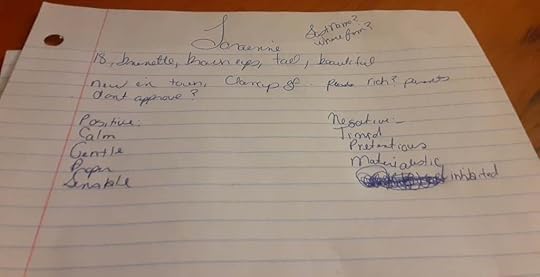

If you’ve read my book, you know that is NOT Lorraine. How/why did she change? The only way I know to describe it is that she told me I was all wrong about her.
One day early on when I was writing, I felt like Lorraine was telling me she was actually not quiet or soft spoken at all but loud and opinionated. That she cared deeply about social issues. She drew hard stances on politics and had lots of ideas on how to improve the country, but struggled making decisions in her own personal life.
That was intriguing to me because I think we all know people who have opinions about how everything in the world should be, but their own lives are such a mess, we’d never want to put them in charge of anything else.
As I was changing my outline to include these aspects, she also whispered that she actually wasn’t tall or all that beautiful, that her hair was blonde, and that her parents actually had no problem with her dating Clancy even though he didn’t have money.

I liked the new Lorraine so much I changed much of the plot to involve her more. I didn’t plan on making her a point of view character until I wrote the scene where she and Clancy met at the gas station through Clancy’s point of view. I clearly heard a line in my head. Lorraine saying Clancy was so obviously flirting with her and in such a silly looking hat. I loved that line and knew I needed to rewrite the scene in her point of view, and it was so much better the second time around. It’s still one of my favorite chapters in the entire book and one of the very few that neither of my editors touched. I then went and searched my outlines for other scenes where she could be the point of view character.
A lot of people don’t like Lorraine and I get it, she’s pretty wishy-washy and causes a lot of problems for the Fitchett brothers, but she’s my favorite character. I really think that’s because she’s the one who most came alive to me as I wrote. She’s the one who surprised me, and we writers love to be surprised.
With A River of Crows, one character who was supposed to be a main one, Felicity, sort of fizzled out and became really minor. She was just pretty uninteresting to me.
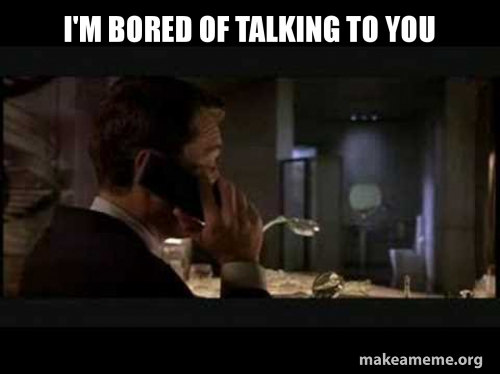 Gattaca, another classic.
Gattaca, another classic. Meanwhile another character, Dylan, stepped out of the shadows. In my original outline he’s in one scene, in the final draft he’s a main character.
According to Celeste Kidd, a professor of psychology at UC Berkeley, imaginary friends are a symptom of a child developing social intelligence. Around the age of 4 and 5 children begin to understand that people possess different beliefs, desires, and exhibit different behaviors than themselves. This is called theory of mind. Studies show that children who have imaginary friends often have advanced theory of mind. In other words, they have a greater understanding of diversity, which is pretty cool when you think about it. It’s also been found that children with imaginary companions are better storytellers, telling stories with more narrative richness.
 RIP Bing Bong
RIP Bing Bong 
This social intelligence, the realization that people are different than we are, also lends to creating great fictional characters in my opinion. Sure, sometimes authors base characters on ourselves (I did with Garrison), but we have to use our imagination (and experiences) to also create people very different than we are. Because like 4- and 5-year-olds realize, the world is better with diversity in it.
I can’t read a book where the main characters are flat and there are a few genres I avoid for that reason —because the characters are usually not realistic and well-rounded. My characters don’t always react like I would, or say what I would say. They don’t all share my same morals or life experiences, and thank goodness they don’t or my stories would be incredibly boring.
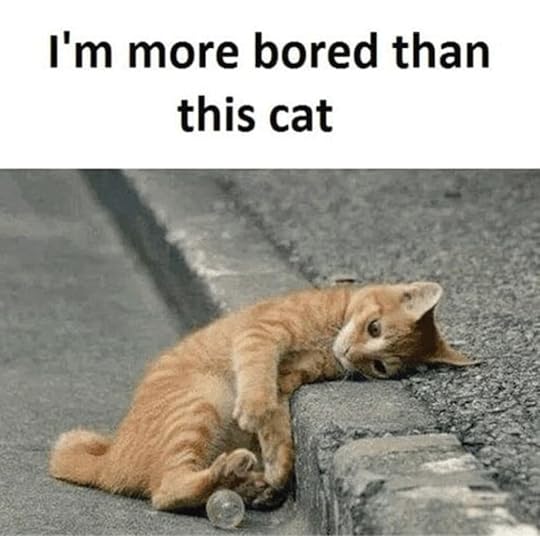
I LOVE the movie Split, but trust me, that’s not the kind of disorder that’s going on here. It’s not like Shanessa goes “out of the light” and then Clancy takes over and I have no idea what’s going on. When people have complaints about the content of the book, I can’t say “Crawl made me do it.” Although wouldn’t that be nice when I get messages from unhappy readers.
The only critical/complaining messages that were personally sent to me were by a few Christians who were disappointed about various aspects of Enemies of Doves. (I always do find that interesting when I think about some of the incredibly dark stories and people in the Bible, or the erotic love poem in it, but to each their own.) I’m responsible for all I write and I get the final say. I could have kept Lorraine how I planned for her to be. I could make everyone always make good and moral decisions, but my stories would suffer for it. So, I don’t scrub my characters clean with soap, I give them some grit and I let them screw everything up frequently. I let them become real, and let’s face it, real people are messy as hell…or heck, I mean.
I mentioned earlier about how children with imaginary friends often tell more narratively rich stories and are more creative. Does that continue into adulthood? According to a 2010 study, maybe so. It found that children with imaginary friends grow up to score higher in the Gough Creative Personality Scale. But whether writers had these types of companions as children or not, one thing is certain, we all live among many imaginary friends now. And I’ll let you in on a secret, it’s really fun.

March 9, 2021
Reflections on Year One
March 20th marks one year since Enemies of Doves was released! And what a year it’s been. Highs, lows, and everything in between.
 *After one year when that year is 2020*
*After one year when that year is 2020*Looking back, I shake my head at how very little I knew about launching a book. I didn’t even take off work for my release date and had nothing scheduled for the day besides running a few ads. However, COVID struck, and I was home March 20th. That afforded me the opportunity to sit and obsessively check my Amazon sells rank and my launch team’s reviews.
I regretfully missed a few celebrations and both my scheduled book signings due to COVID, but I did gain something else valuable—time. I had more time at home to learn about marketing, specifically marketing solely online as the world went into lockdown and 2020 began its downward spiral.
 2020 interrupted all of our plans
2020 interrupted all of our plans
I began to network, had great conversations with other authors, joined reading groups, and slowly learned ways to increase my book’s chances for success. Book sales were down overall nationwide due to COVID, so I feel authors had to work extra hard last year, specifically debut ones. That’s why the 2020 debut group I joined was so valuable to me. The friendships made and support received there was the best part of debuting my book in a year where nothing went according to plan.
 All the beautiful books we launched together this wild year.
All the beautiful books we launched together this wild year. Photo Credit: Catherine Wallace Hope
Another high was making Amazon’s bestseller list after Ashley Spivey let me take over her Instagram book club for a day. I didn’t even have an Instagram when my book came out, so it was a huge learning curve. Then the day it was scheduled, roofers showed up at our house to begin completely redoing our roof. So, I sat in my car all day with my phone and made the best of it. That night I broke into the Top 100 in the Historical Mysteries category on Amazon. I only peaked higher when my book was on sale months later, but to make it that first time with a full price book was pretty special. Ashely was so generous to share her platform with so many debut authors. I have loved her since her season on The Bachelor, and I still fangirl when I scroll through my contacts and see her number in my phone. I honestly can’t love her or thank her enough.
 94!
94!My best ranking was 27. Still not giving up on number 1 someday!
I’ve also been really moved by the requests for sequels or spin offs that I’ve received. So far readers have asked for a sequel detailing what happened after the book (Did Garrison and Molly get together?), a book that tells the story of what happened between Joel and Clancy’s decision at the end of the 1940s timeline and the prison visit in 1991, a spin off book about Crawl’s life, and a spin off book about Garrison’s grandmother’s life. It’s truly an amazing feeling to write characters that people want to read more about.
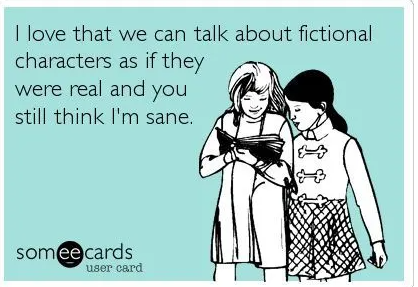
Probably my ultimate high for the year was getting the audiobook deal. Not only was I dying to hear my story come alive, but the fact that another publisher bought the rights to it meant that they saw the same potential my original publisher did. That’s a really validating feeling. Not to mention, it made the Amazon top 100 on release day.

A few other noteworthy moments of the year — holding my book for the first time, every day of my two incredible blog tours, and being selected as a Finalist for the IAN book of the year in the Debut Novel category.
But what are highs without lows? I had plenty of those as well.
I was really deliberate about which contests I entered. I wanted a win to mean something. Honestly, some contests give out so many prizes, it really dilutes the significance of them. If everyone wins, did you really win? Some fine print I read on several contests explained that your book might not even be read by the judges. So, I chose carefully, knowing I was entering competitive and reputable contests.
That knowledge didn’t really lessen the blow when the first contest I entered, a local one for my state, posted results and Enemies of Doves didn’t even make the finals. Ouch. In that moment, I honestly wished I would have entered a few where a win was more likely. Luckily, I was a finalist in the next contest and am still in the running for the last two I entered. However, if I’m being honest, I do still feel the sting of that first loss, especially since it’s tied to my home state.
A few lows also came from reviews. The reviews for Enemies of Doves have been overwhelmingly positive. I believe I have a 4.8 average on Amazon and 4.5 on Goodreads, but those bad ones did hurt. It’s hard to put something so personal you created out into the world and have someone tear it apart. However, I remind myself that means my book is out there, being read by more than friends and family, and bad reviews are part of being an author. All I can do is learn from the critiques and try to improve. However, there will never be a book that resonates with every reader.

Besides reviews, I occasionally got an email or message on social media about my book. Most were positive, but I got a few doozies as well, even from people who know me who were disappointed by the book for one reason or another. (I don’t know why the boldness of people still surprises me, but it does).
Ultimately, of course, I don’t like the idea of having disappointed anyone, but I’m proud of my book and wouldn’t change a thing.
Probably my lowest low was around September, when I had to make a difficult decision — continue promoting Enemies of Doves, or write another book. I was going back to work and couldn’t do both. I decided to stop marketing and focus all my free time on writing. I honestly felt grief over leaving my first book behind. You can read more about that here.
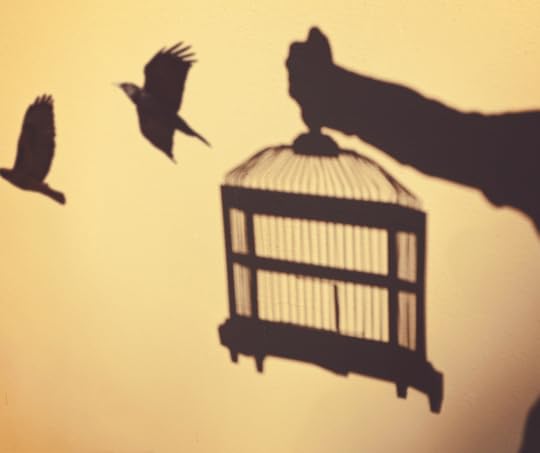 Letting go…
Letting go…However, six months later, I can say it was the best decision I could have made. I’m on my third draft of that project I began, and writing has been so much more fulfilling than marketing. Somehow, I’m still getting royalties and reviews for Enemies of Doves. I’m pleased it’s still finding its way into the hands of readers in spite of inaction on my part.
All in all, I’d say it was a pretty good year author wise. I have learned a lot that I’m eager to apply when my next book releases. I’m also hopeful that new readers who enjoy A River of Crows may go look up what else I’ve written and discover the story of Joel, Clancy, Lorraine, Garrison, and Molly. Those characters and their story will always have a special place in my heart.
 The way I pictured the characters as I wrote the book…
The way I pictured the characters as I wrote the book…
Happy first book birthday, Enemies of Doves!
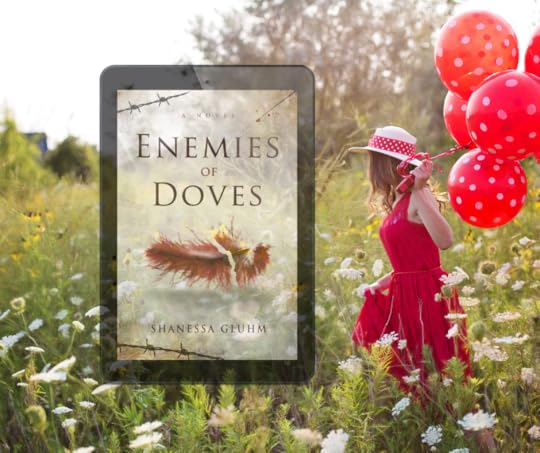 And many more….
And many more….
February 21, 2021
Doves vs. Crows
While writing my debut novel, Enemies of Doves, I more or less had two moods:
“This is really good!”
“This is s#%!”
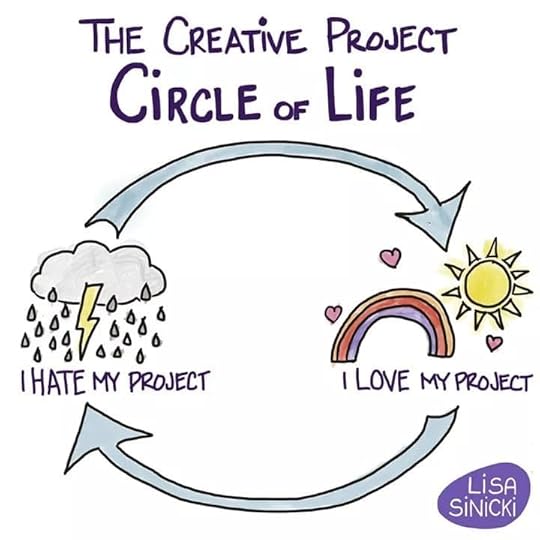
I still have those two alternating and antithetical thoughts as I write A River of Crows. But since this is my second book, I have fun new doubts too:
“Is this book as good as my first?”
“Why am I writing this one so much faster? Am I rushing it?”
“Are the twists big enough?”
“Is this too dark for my readers?”
“Are the characters as likeable? Are they too flawed?”
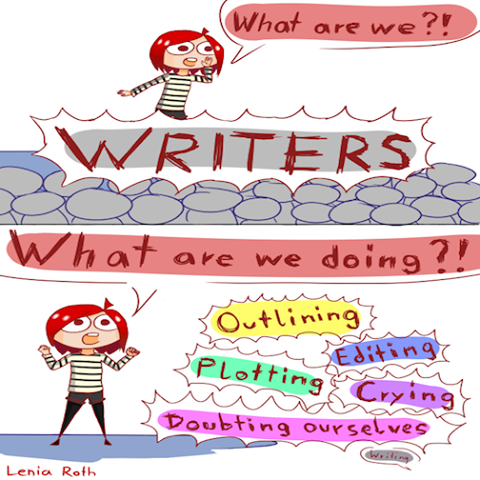
I don’t think it’s possible to be a writer and not live in a state of paralyzing self-doubt with rare moments of audacious confidence that keep you from setting your entire manuscript on fire.
I gained an audience with Enemies of Doves, and I’d like to keep them, but I’m not writing a sequel. This is a fresh new story that will hopefully reach new readers, but I really want to keep my established ones as well. I’ve been asked a lot if A River of Crows is similar to Enemies of Doves, so I decided to break down the similarities and differences from concept to the story in a blog.
Idea
The idea of Enemies of Doves started with an idea for the plot twist that my best friend came up with and a title I’d wanted to use awhile. I built the entire story around those two elements. For A River of Crows, the idea came from a small creek and a song on the radio. I was driving through Texas when I passed a creek named Crow’s Nest Creek. The name stirred me. I liked the idea of using a bird motif in all my books. At that moment, an old Keith Whitley song came on the radio— I’m Over You. A plot began to form. I decided something terrible had happened at this creek that left a family estranged. I knew the father and daughter were huge Keith Whitley fans and that the father went to prison the day Keith Whitley died. (I had no idea why yet). This song is about the loss of a romantic relationship and pretending you’re okay when you’re not, but I knew in my story my main character was lying to herself about the pain associated from the loss of a relationship with her father.
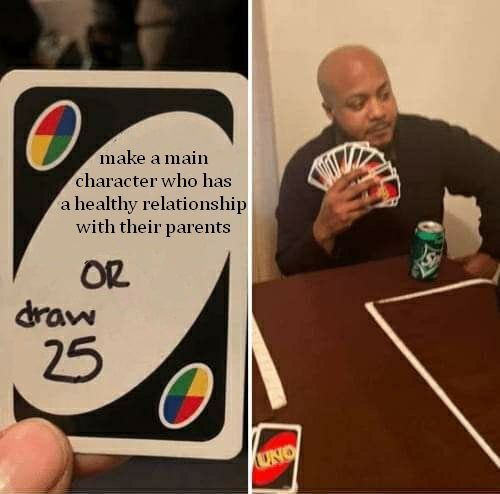
Writing Process
Doves took FOREVER to write and edit—a little over three years. I knocked out the first draft for Crows in about four months and am almost finished with my second draft. I predict I’ll be completely finished with my final draft by August, so about one year total. I owe some of that to more time at home due to COVID, but most of it to not having a toddler around. But when I think about the experience, writing at the park while my sweet little boy played was such a special time that I’ll never forget. Writing this one sitting in my living room on the computer doesn’t have that same emotional tie for me, but man was it easier.
Tone
Crows carry a darker connotation than doves, and that’s a fitting analogy for my two books as well. A River of Crows is a darker story, it’s not Stephen King dark, but it’s darker than my debut, no doubt. A few people told me that Enemies of Doves was too dark for them because they thought it was going to be Christian fiction. That’s just not the genre I write in.
I do feel that in spite of some darkness in Doves, it ended with a sense of hope and redemption in spite of great loss. I think Crows will leave you with that same feeling.

Characters
The main compliment I’ve gotten in reviews for Doves is my character development. I think this is the area I excel in as a writer. I spend a lot of time creating characters and put tons of thought into their strengths, weaknesses, and emotional wounds.
I used the same creation process for both books, so I feel all my characters are equally developed. These in Crows are certainly just as “real” to me as Joel, Clancy, Lorraine, and Garrison. However, the flaws might be a bit more prominent for a few characters in this one. These are people who have made some big life altering mistakes and I do sometimes worry people won’t connect with them the way they did with my characters in Doves.
My original plan for Doves was to have three point of view characters, all male. However, Lorraine sort of came to life to me and demanded a voice, so she became a point of view character as well. I had planned for Crows to have three point of view characters, two females and one male,—however, the further I got into it, I felt this was the girls’ story to tell, so I made some changes. That male character is still very important, we are just never inside his head. That’s not to say this is a women’s fiction story, because it’s definitely not, but the story was just better served using all female narrators.
Structure/Setting
Like Enemies of Doves, A River of Crows is set in two timelines and the back-and-forth structure remains. I think I’ve done better with that this time when it comes to revealing things at the right time and in the right timeline. Doves was set in the ’30s through ’90s with the main timelines being in the ’40s and 1991. Crows is set from the ’70s-2008 with the main timelines taking place in 1988 and 2008.
Both stories are set in East Texas. In Doves, I used real towns that held meaning from my childhood, but in Crows I invented a town and a creek so I didn’t have to do as much research.
I got a lot of compliments about the ‘90s nostalgia factor of Enemies of Doves and I feel I’ve kept that up in A River of Crows when it comes to all things ‘80s. It’s been fun!

The Twist
Doves has two pretty big twists near the end that most didn’t see coming. Crows has twists as well, but not as big as the ones in Doves, in my opinion. And the biggest twist comes in the middle of the book, not the end. Often, I wonder if these twists are enough, or if the reader will be expecting something bigger as they approach the ending. I’m super anxious to get the book in the hands of some beta readers so they can tell me what they figured out and didn’t. I don’t want anything to be too obvious, but I also want to include enough clues that readers can think back and say, “Oh yeah, that makes sense.” It’s a tough balance.
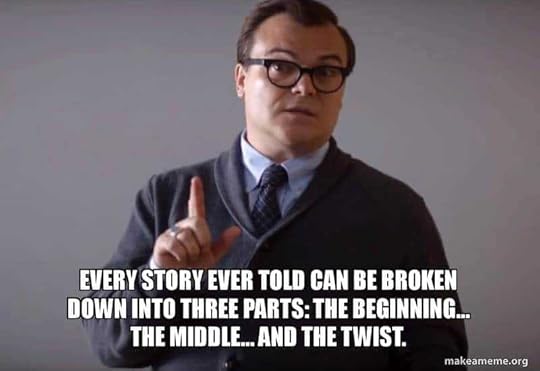
Genre
Doves struggled in many ways because it didn’t fit squarely into one genre. This was a frequent issue for agents and something my first editor warned me about. It’s a mystery/suspense, but also historical fiction, a family drama, and a romance. I set out to make Crows fit into one genre; but I guess formulas just aren’t my thing. However, this one doesn’t suffer quite the identity crisis my first book did.
A River of Crows will definitely be classified as a mystery, but it’s not necessarily a whodunnit. I’d say it’s probably equal parts family drama and mystery with a little romance thrown in. Like Doves, the drama and dysfunction focuses on families, and in particular, siblings.
Fun fact: I told everyone there was no romantic storyline in Crows and there wasn’t going to be. However, my main character fell in love with a very minor character who was originally only going to be in a few scenes. This phenomenon is hard to explain to non-writers, but these people that exist only in my mind somehow do develop a mind of their own. Yeah, I might be crazy.
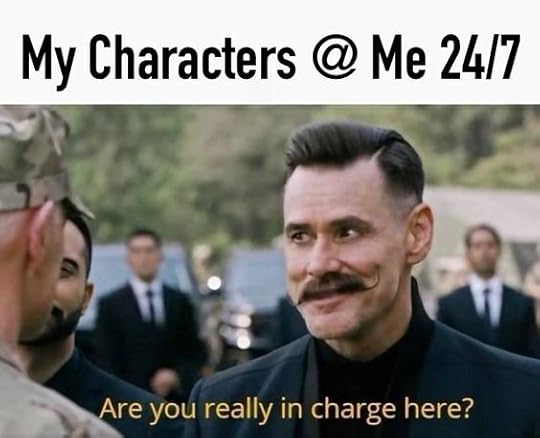
Themes
Enemies of Doves and A River of Crows share some common themes—Trauma (specifically childhood trauma and PTSD as a result of combat), justice, redemption, lost love, and the power of childhood memories.
However, the main theme of Crows is a new one for me to explore—revenge.
Music
I wrote most of Doves at a park listening to the breeze through the trees, cars driving by, and my little boy laughing. However, in the late-night editing phases, I played a ‘90s country station on Pandora just to get myself in the ‘90s frame of mind. I also listened to a few ‘40s songs.
For Crows, I feel like music (and Keith Whitley) are my muses. A lot of people say they can’t write while listening to songs, but I couldn’t have written this book without my personal Spotify playlist. I started it with just a few Keith Whitley songs and it’s since grown to over 90 songs from various genres, artists, and years, all with meaning to the story. I’ll blog about that once the book is out because it would give too much away now.
I actually wasn’t some huge Keith Whitley fan before I started writing this book. Don’t get me wrong, he’s great and I’ve always enjoyed his music, but it would have made more sense for me to make my characters Garth Brooks fans since he’s my favorite. However, there is just something about Whitley’s songs and tragic story that lined right up with the story I wanted to tell.

For the Birds
I spent a lot more time researching crows than doves and found them to be a lot more interesting. I worked the crow motif deeper into the thread of this book than I did with doves in my first one. Which bird will I use for my next book? Hard to say, but cardinals are my favorite so I’m hoping an idea for that might present itself. (I honestly wasn’t really a bird fan before I started writing oddly enough, but they’ve definitely grown on me and become more interesting to me).
And the winner is….
So, I guess the final question is which book do I think is better? I don’t know! Most of the time I think A River of Crows is head and shoulders above Enemies of Doves, and other moments where I worry it’s going to be a giant disappointment.
I can say with 100% certainty say that my writing has improved with book two, but as far as the overall story and characters…well….I guess I’ll just have to leave that up to readers like you.

December 10, 2020
Stranger Danger????
Before I begin, a trigger warning. This blog post deals with child abduction and child abuse allegations.
I’ve blogged about research before and the dark and deep rabbit holes you can find yourself tumbling into. I only thought I had some sketchy search history for Enemies of Doves. A River of Crows was truly a different ballgame. I spent an entire night doing a deep dive into date rape drugs that don’t stay in your system long. So, that should give you an idea of all the watch lists I’m currently on.

Let me start by saying, I had two other book ideas and tabled both of them because I didn’t want to write a book that needed extensive research. A River of Crows is set in 1988 and 2008, so I naively thought I wouldn’t need to do much research. That is so funny to think about now, after six months of a disturbing and frustrating quest that ultimately ended with me contacting the FBI and changing major aspects of my plot.

This is a bit hard to blog about without giving any spoilers, so I’m going to be as general as possible when it comes to how any of this plays into my book.
The most pleasant research I got to do was about crows, and it was fascinating. I can’t wait for you to learn all the fun tidbits I did and see how I wove crows as a motif throughout the entire story.
 My nightly reading
My nightly reading The least enjoyable research I had to conduct was about missing children. The plot of my book revolves around a (fictional) boy who went missing in 1988. As a child of the ’80s I grew up in what I’ll call the “Stranger Danger” generation. (Also, the “Satanic Panic” generation, but I’ll get there in a bit). As a child, I feel like I was constantly told to look out for kidnappers. My mom used to tell me stories of how she’d ride her bike all over town as a kid, but now that was no longer safe. I remember rumors in my town about a red truck with a white stripe that a kidnapper drove. As a kid who played outside a lot, I remember that sense of panic every time I saw a truck matching that description drive by. I’d hide in the bush or run inside. When you are looking for something, it’s amazing how many times you’ll see it.
 Published in 1984
Published in 1984I also remembered several cases of missing children, but the details were vague in my mind… a missing paperboy, a child taken from a shopping mall, faces on milk cartons. So, I got to wondering, was there an uptick of child kidnappings in the ’80s? Was the media just fixating on it? Had the world suddenly gone mad? Were we really in grave danger?
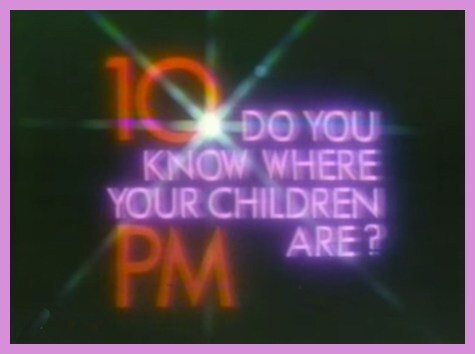 Popular 10:00 news intro of the ’80s
Popular 10:00 news intro of the ’80sI started by listening to a podcast called Faded Out hosted by Sarah DiMeo about the kidnapping of Johnny Gosch, a 12-year-old paperboy in 1982. His case is so fascinating for many reasons. For one, it remains unsolved, and there are SO many conspiracy theories out there about it. This podcast went deep into all of them. Johnny’s parents are divorced and the father believes (as the podcast host did by the end of her research) that Johnny was taken by a pedophile and likely killed that same day. The mother believes Johnny is still alive and was a victim of a far-reaching, powerful child pedophile ring. She claims Johnny showed up at her door as an adult, told her these things, and then walked away into the night never to be seen again. I just can’t stress how crazy a story this is and how deep some of these conspiracies go, but basically it involved allegations against some of Omaha’s more prominent citizens and stretched all the way to top officials at the White House (George Bush Sr). Ultimately, a grand jury found that the rumors of this pedophile ring was an elaborate hoax, but there are many out there on the web who still fully believe it. There were times I was unsure, but after hearing everything, I tend to agree with the father and podcast host, but I’m not a conspiracy person in general either.
 Before Amber Alerts and Facebook, milk cartons were used to distribute information about missing children.
Before Amber Alerts and Facebook, milk cartons were used to distribute information about missing children.Another defining aspect of the ’80s was the rise of Satanic Panic. Everything in the ’80s was said to have ties to satanism. Lyrics played backwards, shampoo logos, even the drumbeats of Christian rock music could summon demons. Satanists were poisoning Halloween candy. (There was one lone case where Halloween candy was poisoned, and it was a father killing his son for an insurance scheme. All the rest are urban legends.)

When it came to children, there were wide spread allegations of satanic ritual abuse in the ’80s. I listened to and read tons of crazy stories that children shared about parents and daycare workers abusing them and performing satanic rituals on them. Just crazy, insane stories. The mantra then was understandably, “Always believe the children.” Because WHY would any child make something like this up? Well, almost every story I found involved a child being coerced by a therapist, prosecutor, or parent in a divorce proceeding. Satanic panic basically started with a discredited memoir from the ’70s and spread like wildfire, leading to a modern-day witch hunt.
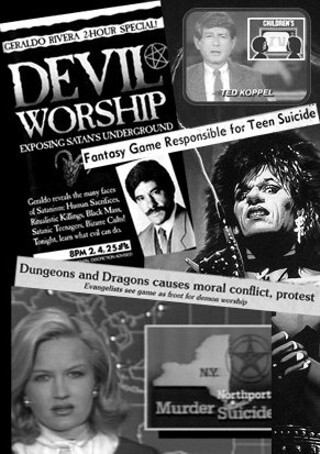 This received the highest ratings ever for a 2 hour documentary. Rivera later apologized saying, “I am convinced that I was terribly wrong…and many innocent people were convicted and went to prison as a result “
This received the highest ratings ever for a 2 hour documentary. Rivera later apologized saying, “I am convinced that I was terribly wrong…and many innocent people were convicted and went to prison as a result “Think about the ’80s, a time of economic growth where, in many households, both parents worked, necessitating an increased need for daycares. Many feared this was the end of the nuclear family and thus daycares became a popular target of satanic ritual abuse allegations. Don’t people always fear change and the unknown?
Many people’s lives were ruined because of false allegations. Simply put, almost all incarcerated individuals accused of satanic ritual abuse have since been exonerated. It was true mass hysteria. In 1992, the Department of Justice thoroughly debunked the myth of the ritualistic satanic sex abuse cult, talk show hosts and journalists apologized, but the damage was done. To this day, many people still don’t know the truth. In fact, many of these theories are beginning to circulate again, but I’m not gonna touch that right now.
The last child kidnaping case I decided to really delve into was Jacob Wetterling, an 11-year-old boy kidnapped and murdered in 1989. His case was solved after 27 years, largely thanks to a blogger. The Wetterling abduction led to the establishment of the sex offender registry. I began listening to a truly fantastic podcast called In the Dark about this case.
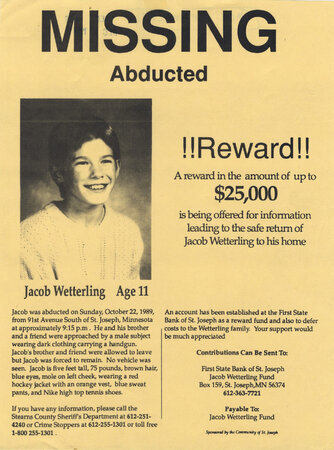 A truly heartbreaking case
A truly heartbreaking caseIn all my podcast listening and hours of readings, it seemed that most claims of elaborate pedophile rings of the ’80s were debunked, and in most of these infamous cases, it was an individual acting alone who kidnapped, abused, and usually quickly disposed of their victims.
I still wanted to know, were the kidnapping numbers up in the ’80s? I found several articles that claimed it was just awareness that went up, and the number of children kidnapped was very, very small. WHAT? That seems to go against everything we hear about concerning child kidnappings. So, I started looking for the actual numbers of kidnapped children, and I couldn’t find anything except articles saying that in a vast majority of cases, missing children are runaways that return home within a very short amount of time. I read over and over that stranger kidnapping is extremely rare in the USA. Almost all missing children reported in our country are supposedly recovered.
Still, I needed to see the stats on this. Sex trafficking is a huge industry. I mean, we can’t go on Facebook without reading a story that happened in a Walmart of someone trying to take a child. I have had a terrifying personal experience with this with my youngest child in our own front yard.
I ended up on the FBI site and couldn’t find the numbers, but I did find something else, a way to request information from on them. So, I did. I filled out a request asking for the numbers of missing children for the years in which my book is set.
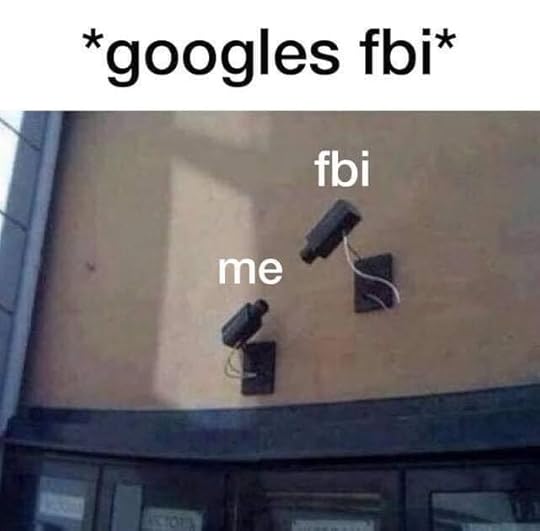
While I was doing this, I was still listening to the Jacob Wetterling podcast and halfway into episode six, my mouth dropped open. They too were seeking out numbers for children kidnapped then vs. now. They were curious if the sex offender registry has actually decreased kidnappings. Like me, they assumed the FBI must have numbers on this, that surely, they do some sort of yearly report. They requested this information and were denied. They tried again and were contacted by what is called a FOIA (Freedom of Information Act) negotiator. She eventually told them the information was spread out in boxes that would be too hard to gather. They requested access to the boxes themselves and were denied.
I got a similar response from the FBI. They denied my request basically saying that I can’t ask that the FBI conduct research. In other words, they have no numbers compiled to give me.

And as I learned by the research done by Madeline Baron and her team on the podcast, there are still no numbers they could give us for recent years. Local law enforcement agencies are not required to do any reporting to the FBI about missing children. What she did find is that Congress requires the Justice Department to do periodic national incident studies about how many children are missing and how many are recovered, but in the past 30 years, they have only done two.
Luckily for me, one of those years was 1988. (What are the odds?) However, this report only surveyed 83 agencies and estimated that 200-300 missing children reports were stranger abductions. They did the same study in 1999 and surveyed over 4000 agencies. They estimated that there were about 115 stranger kidnappings that year.
In both studies, the vast majority of missing children were runaways or children missing for benign reasons (miscommunications, sneaking out to see a friend, etc.). Only 7 percent were family abductions and only 2 percent were non familial abductions.
You really can’t compare these two years because they used different methods of counting and the federal government actually says they should not be compared. So, in short, the FBI has no record of how many children are kidnapped year by year and whether the numbers are going up or down.

As Madeleine stated on her In the Dark Podcast, “Will and I spent 6 months researching this, and in the end, we came up with almost no data on what lawmakers, the media, and pop culture have led us to believe is one of the worst threats facing children in this country.“
This is just bizarre to me that in this day and age that this information can’t be tracked and compiled. Obviously, one child is too many, and it’s important we know about about any missing child regardless of the reason so we can keep an eye out, but if the numbers for stranger adductions are so small why are we so preoccupied with the idea of stranger danger as a culture?
I had no doubt these numbers had risen by 2020 due to the rise in human trafficking, so I tried to do some research on that, but again, it’s all estimates. Because of the hidden nature of trafficking, it’s hard to gather reliable statistics. But I found that cases of kidnapping in human trafficking operations are relatively rare. More often, victims are coerced or forced into trafficking through familial or romantic relationships. I also learned the majority of trafficking victims are adult women and that half of trafficked children are sold for a few hours at a time by a family member for money or drugs. It’s not always like the movies portray, and that’s often why we overlook so many victims in plain sight.
According to the International Centre for Missing and Exploited Children, an estimated 460,000 kids go missing in America now each year. But that again is only an estimate. They acknowledge that the statistic is inaccurate and not enough information is known. For instance, are only 2 percent of those actual stranger kidnappings as was the case in 1999? In short, they have no idea.
The National Center for Missing and Exploited Children probably has the most up to date information I could find, but many of their numbers rely solely on calls to their tip line. They do acknowledge that nonfamily abductions are the rarest type of case and make up only 1% of the missing children cases reported to them.
Are all these estimates and calls into a hotline the best we can do for tracking these cases? Isn’t a nationwide framework overdue? When I told my husband that I contacted the FBI, he said, “Why would you do that? You know you are already on their watch list.”
So, FBI Agent reading this post, please look into this. Surely we can do better.
 MY FBI agent reading this blog
MY FBI agent reading this blogIs anyone else surprised by these numbers or lack of numbers? As I said, it really changed the course of my book, but you’ll have to wait till it comes out for more information on that.
 Coming soon!
Coming soon!
October 28, 2020
National Novel Writing Month
Can you believe we are approaching November? What a strange year 2020 has been. Enemies of Doves released right as we went into lockdown in March. Since then, the days, weeks, and months have bled together, and we find ourselves with only two months left in this year that we are all ready to put behind us.
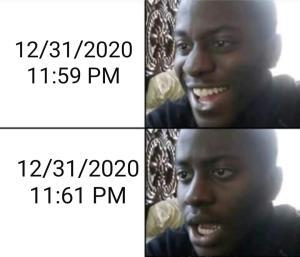 At this point nothing would surprise me
At this point nothing would surprise meNovember is National Novel Writing Month, NaNoWriMo, for short. This internet-based challenge began in 1999. I first heard about it in 2001 and have been putting it off every year since. The NaNoWriMo challenge is to write 50,000 words of a novel during the month of November. For you non-math types like myself, that’s about 1,667 words a day for 30 days.
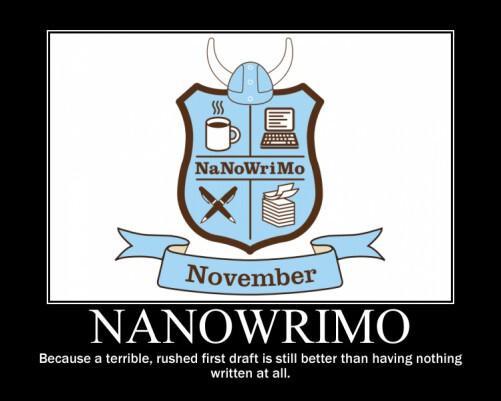
That’s. A. Lot. Of. Words. I’m a pretty slow writer. Enemies of Doves took me over three years to write and edit. (Five before it saw publication). I’m also easily distracted by social media, true crime podcasts, and children. When Enemies of Doves was released I had only written the outline and the first chapter of A River of Crows. In the following months, I added only a few more chapters. It was nearly impossible to market one book and write another.
At the end of August, I decided enough was enough. I was done spending hours a day marketing my debut. It was time to shift my focus to my second book. I was back at work; my kids were starting online learning, and there just weren’t enough hours in the day to market and write. It was time to shift from doves to crows.
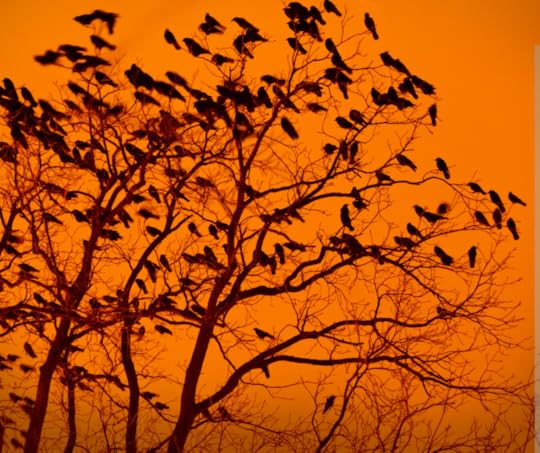 I think you guys are really going to like this one!
I think you guys are really going to like this one!I’m happy to report that in September and October, I’ve written about 42,000 words, putting my total word count at 51,000. I’m over halfway done. When members of a Facebook group I’m in for 2020 debut authors started talking about NaNoWriMo, I felt the tug to participate too.
Then I promptly talked myself out of it as I always do. As I have done for eighteen years. Work is anything but normal this year, and I come home exhausted. My kids need help with online work, and all the annual doctor and dentists appointments I canceled during summer are all falling in November. I even have two online events for Enemies of Doves. I felt to participate I’d just be setting myself up for failure.
But then I asked myself, what’s the worst thing that can happen? You don’t make your goal? Then what? Are they going to take your novel away and make you start over? No. At the very least, I’ll have more words than I started the month with, more words than I would have had without the motivation to make the 50,000-word count goal. I lose nothing by trying.

And the best-case scenario? I finish A River of Crows. Well, the first draft anyway.
I need to finish it. I know that the goal of authors is typically to have a book out every two years. It takes at least a year after you sign for your book to release. So, I’ve set a goal to have it ready to submit for publication by August 2021.
There’s a lot that has to happen between the first draft and submission. I’ll have to do at least two more drafts, send copies to my beta readers, and then prepare a final draft. Not to mention, the dreaded synopsis and query letter. In order to get all that done by August 2021, I needed to finish my first draft yesterday.  I’m hopeful participating in this challenge will help along. I technically don’t even think I’ll need 50,000 words to finish it but will need at least 40,000.
I’m hopeful participating in this challenge will help along. I technically don’t even think I’ll need 50,000 words to finish it but will need at least 40,000.
So, I’ve made the pledge, created my account, and added some writer friends that are participating so we can cheer each other on.
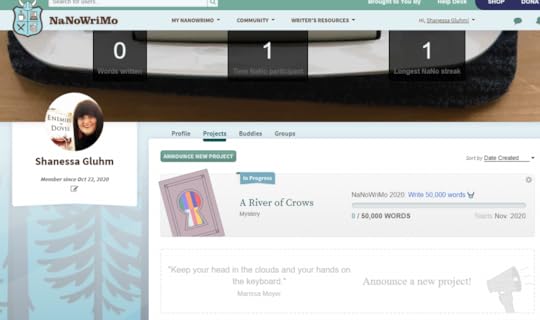
I’m not exactly sure how long that word count will take to write each day, but I’m going to either get up an hour early to write or stay up an hour late. As I’m sure all parents can understand, I write best when my children are asleep.

I know I’m going to have to change my method just a bit. I know the rule of writing the first draft is just to write it and worry about editing later, but I don’t follow that exactly. My brain won’t let me move on until the chapters are “good enough” in my mind. Yes, they still need lots of work, but I can’t stand leaving blanks to fill in later or tons of red squiggly lines all over my document. So, what I normally do is write a chapter, then go back and do a quick edit of it before moving on. That quick edit is going to have to go out the window to meet my word count goal. So, I’m telling myself, just write, write, write in November then edit, edit, edit in December.
So, wish me luck and know if I’m MIA on social media or walk around looking like a zombie in November, you’ll know why. I’m pushing myself to write 50,000 words, or finish my novel, whichever comes first.
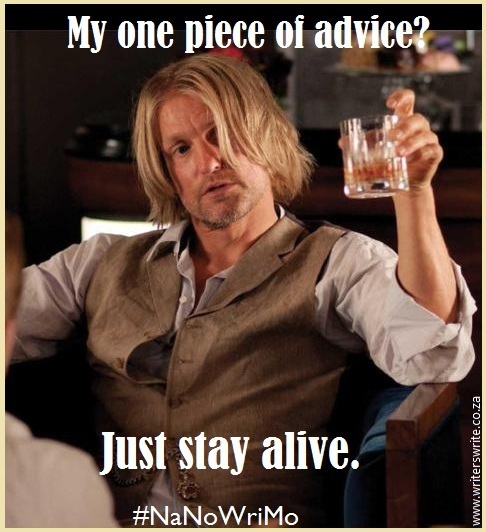
50,000 words is a lot, but it’s all worth it for a chance to write the two most exciting words for any writer…. “The End.”

September 8, 2020
The Post-Publication Blues
While I was writing Enemies of Doves, I had several authors warn me about the sadness that comes once the book is finished. After all, we’ve spent so long with our characters, it’s hard to say goodbye. While I did feel this to some extent, I was able to offset it with my quest to find a publisher. I knew that once I did there would be more edits, so I wasn’t really saying goodbye just yet.
However, nobody warned me about the post-publication blues, which I’m learning from my writer’s groups (and tons of blog posts and articles), is a very real thing.
It feels a bit unseemly to complain about this when so many books go unpublished. It’s like on Friends when Ross was complaining about having to choose between two women and Chandler set him straight.

So obviously all authors are grateful to be published, but that doesn’t mean we aren’t met with disappointments and raw emotions in our journey. I’m a part of a wonderful debut author group on Facebook. The first time I saw a post and all the comments underneath about unrealistic expectations and disappointments I thought, Wow, so it’s not just me!
We all know that any time there is a big build up to an event, there’s always a bit of a left down afterwards. (Post-holiday blues, anyone?) This probably especially true in a year like 2020 where all our events had to be canceled and book sales fell 9% in March and then 16% in April due to the pandemic. (My book released March 20th). It’s a tough year to debut a book.
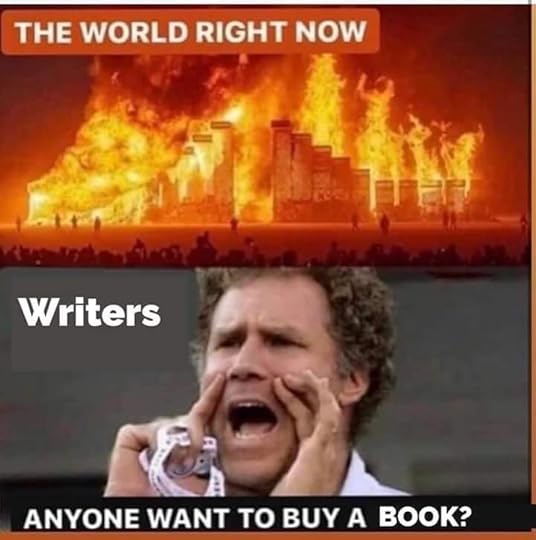
There was a lot of build up to the publication of Enemies of Doves, and in spite of the shelter in place order, release day was wonderful. The story I’d spent five years writing was out in the world. It no longer belonged just to me, but to everyone who would read it. Maybe I was saying goodbye to characters, but readers were meeting them for the first time. My lifelong dream of being an author came true that day. I mean, how many days in our lives can we look back on and say, “That was the day my dream came true.” Probably just a handful for most of us.
Then comes months of promotion and marketing. Learning the ropes as a new author is time consuming yet still exciting. Blog tours, interviews, press mentions, advertising, so very much to do. Then reviews start coming in, waves of emails from friends and family, and then complete strangers and even other authors. You feel validated.
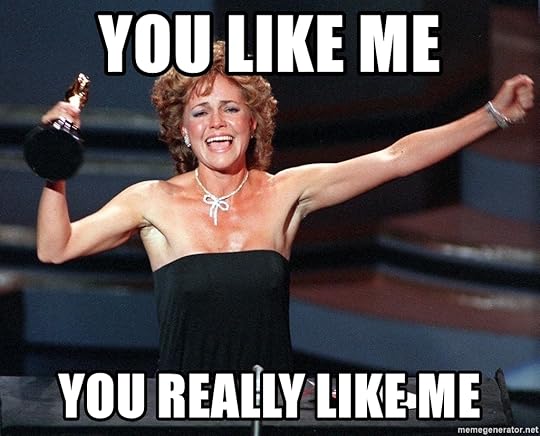
For me, getting my audiobook deal was a huge morale booster. Not only was I dying to hear my story come to life, but that meant another publisher thought it was worth investing in.
But sooner or later comes the slow downward spiral. You find a mistake in your book, you get a few bad reviews, Reese Witherspoon doesn’t read your book. (Who knew she only chooses books with female lead characters anyway?) Your blog tours are over and reviews are dwindling. Looking at your Amazon sales rank can literally ruin your day. Your book isn’t on the NY Times Best Seller List. Your book isn’t even in your hometown library. You worry that people are sick of your “me, me, me” posts on social media. (Honestly, it feels a bit narcissistic most of the time, no matter how necessary it is.) Everyone starts to ask when your next book is coming out and you’re beating yourself up because there hasn’t been time to write while you’ve been promoting this book. You sit down to write it and find that it’s no easier than the first time around. You feel like an imposter.
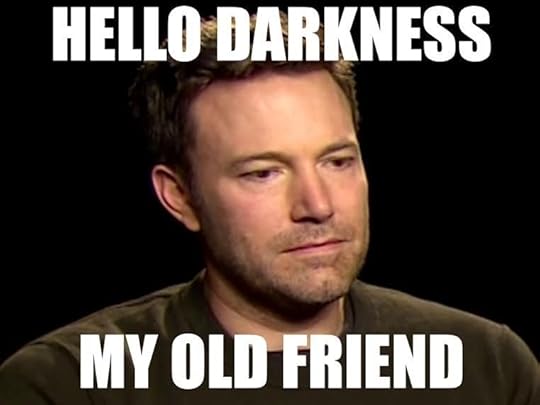
For me, this hit hard a few days after my audio release as that was the last “big event” on my calendar. I’d told myself all along that this was it. That I needed somewhat of an end date for my heavy marketing so I could focus on the new book. Not to mention, I’m back to my day job full time. So, I knew it was coming, but that didn’t soften the blow. It was almost a grief like feeling. Like now I was truly saying goodbye to this book and all the hopes I’d ever had for it. I almost talked myself out of it. “I’ll give it one more month. “I’ll wait till I hear if I won any contests,” “I’ll send one more email to Oprah.” Okay, kidding on that last one, but as much as I tried to negotiate with myself, I knew deep down that it was time to move forward.
Though I feel my book has been a fairly successful debut, it’s hard to move on. You always think, if I push a little longer and a little harder maybe it will end up in the right hands. It’s hard to stop creating graphics, to stop submitting to contests, to stop begging book clubs to pick it. It’s hard to let go, but sooner or later, you have to.
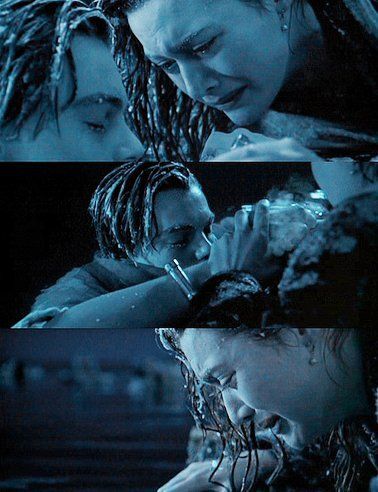 Too soon?
Too soon?For me, I’ve had to shift my mindset and focus on what I can control. I can’t control sales, I can’t make people leave reviews, I can’t make book stores carry it, I can’t make a film producer buy the rights. So, what can I do?
First of all, I can get some perspective. What is success anyway? When did it become not enough to finish my book and realize the dream of publication? Author Elizabeth Gilbert said: “Mere completion is a rather honorable achievement in its own right. What’s more, it’s a rare one.” Did my book end up in the “right hands” of a book influencer who could make it an instant best-seller? No, but it ended up in plenty of “right hands” of readers who enjoyed it.
Secondly, I can write something else. Writing is where my talent is, where my passion lies. My heart is not and will never be in marketing.
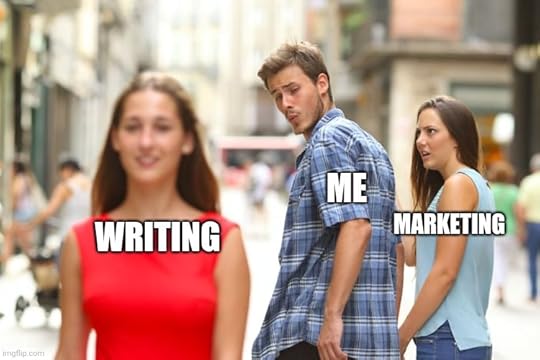
As author Ryan Pelton says, “Too many writers and creators get hung up on their One Thing. And the One Thing can easily lead to the Only Thing.”
The good news is that I’ve had enough success with Enemies of Doves, that I hope I have a good shot of being published again.  (Not to mention a great story idea). I know that readers who loved Enemies of Doves will likely buy my second book. And if a new reader discovers and loves my second book, it’s a free advertisement for my first. As a very wise and successful author once told me, “play the long game.”
(Not to mention a great story idea). I know that readers who loved Enemies of Doves will likely buy my second book. And if a new reader discovers and loves my second book, it’s a free advertisement for my first. As a very wise and successful author once told me, “play the long game.”
So although they will always be a part of me, I say goodbye to Clancy, Joel, Lorraine and Garrison, so I can make more time for Sloan, Ridge, Dawn, and Jay.
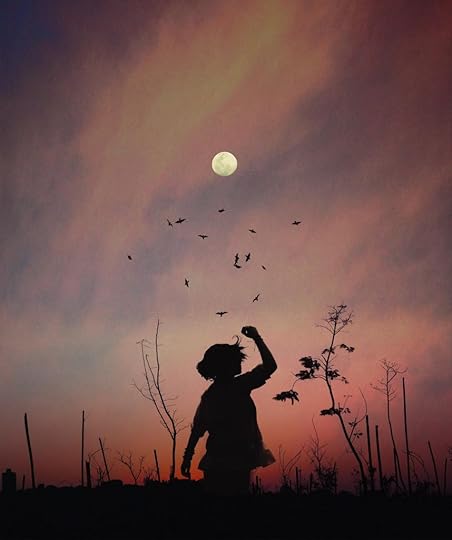
Enemies of Doves doesn’t have an expiration date. It’s not going anywhere except out of the forefront of my mind. I’ll still accept any requests for interviews and events regarding it. I’ll keep you posted on any good news and reviews and whether or not it wins any of these contests I entered. I’ll for sure blast it all over social media if it gets selected by a famous book club or optioned for a film. But anytime I’m tempted to sit in front of the computer and stare at my sales figures wondering what else I can do, I’m going to open up my word document and write instead.
Because (to borrow more words from Ryan Pelton) my NEXT thing could be my BEST thing.
 Coming soon….
Coming soon….
September 2, 2020
A Man of Many Voices: an Interview with an Audiobook Narrator
Although I love listening to audiobooks, I’ve never given much thought as to the making of them. Hearing mine made me curious about what all goes into the process. I reached out to the amazingly talented narrator of Enemies of Doves, Michael Brusasco, and he agreed to be interviewed for my blog.
Let’s get started!
 The man behind the curtain, Michael Brusasco
The man behind the curtain, Michael BrusascoCan you share a little bit about your professional background? I know you have quite the resume that extends beyond audiobook work.
My audiobook career is relatively new compared to my other artistic endeavors. I have been a professional actor for the last 25 years working at various regional theatre companies across the United States. In addition to acting and audiobooks, I also teach theatre at the college level. Currently, I teach Voice, Speech and Dialects at the Pacific Conservatory of the Performing Arts on the Central Coast of California. I’m also building my voiceover chops because I am incredibly interested in commercial v/o and video game acting (surprisingly, audiobooks and voiceover are very separate worlds). I have a lot of irons in the fire!
 Images of Michael from https://www.michaelbrusasco.com/
Images of Michael from https://www.michaelbrusasco.com/
How does audiobook narration compare with stage acting?
I think the simple, fundamental difference boils down to volume. With stage acting, you are typically performing in houses that seat anywhere from 100 to 1200 people, and you must be heard all the way to the back row of the theater. That means using my voice in a way that is supported enough so that everyone can understand me without frying out my vocal cords. It is not that way with audiobooks: the microphone is right in front of me, picking up every little detail in my voice. My support system is less muscular, but there are so many things I must pay attention to. Any audiobook narrator understands when I say the phrase “mouth sounds”. Every little lip smack, crackle, squish, or pop can be your nemesis while recording. The demand on the voice is different, but equally challenging and fun.
 No yelling required for audiobooks.
No yelling required for audiobooks.
What is the audition process like for an audiobook?
That is a great question because I really think it depends on who you talk to. Typically, most folks go to the ACX website (Audiobook Creation Exchange). It’s where narrators and producers of audiobooks can go to collaborate. If I see a project that is right for me, I will download the audition sample provided by the rights holder, record and edit it, and send it in with my fingers crossed.
Enemies of Doves was different. I was selected by Dreamscape Media to record it. I’m relatively new working with them, so I had to go through a screening process to make sure I was the right fit for the project. They were able to hear a range of my work before selecting me so they knew my voice would work with your manuscript. If I recall correctly, I also sent a sample to the sound engineer (an audiobook narrator’s BEST FRIEND) to make sure I was on the right track before moving deeper into the project.
How do you prepare to record an audiobook? How do you get a feel for the characters and tone of a story?
It may seem obvious, but I read the book first! Cover to cover! One of my favorite apocryphal stories that was told to me was when a narrator, pressed for time, began recording without reading the book first (maybe she skimmed it? I don’t know). The novel was written in the first-person point of view, and when she got to the last page of the book, the character said, “AND THAT’S HOW I GOT MY SOUTHERN ACCENT.” I don’t know whether she had to go back and re-record the whole thing or not, but it’s the best example of why you should read the whole book before starting.
By reading the whole story, you get a sense of the motifs and themes of the narrative. For your novel, I resonated with the themes of justice, of doing what’s right, sacrifice, trauma, family, and love. So, I made sure that each character identifies on some level with at least one of those themes. Your story was also a mystery so structurally I wanted it to have that sense of unfolding revelation. You also have some lovely twists in there as well, and I had to pay attention to those to make sure I wasn’t giving anything away prematurely. Another reason to READ THE ENTIRE BOOK FIRST!
I also look at the voice of the narrator’s point of view. Sometimes, like in the story I mentioned with the southern accent, the narrator’s voice is in the first person, which typically means things are going to be a little more personal. With third person narratives, you need to decide how close you are to the action. Some third person narratives are incredibly omniscient and detached, others are right there in the action with the characters. And it can change in any given chapter. I don’t want the narrator’s point of view to overwhelm the listener, but the voice is its own character in the story. Ultimately the text tells you where to go.
How long did it take you to record Enemies of Doves?
It took me about four weeks to record. I was working on a horror anthology simultaneously so bouncing from murder zombies to the Gib Lewis Unit in the 90s was a trip! Once I submitted the final file to Dreamscape, their extraordinary sound engineer (Joel Thibodeau – the man, the myth, the legend) edited the sound files and then kicked it back to me for pick-ups (mistakes that need to be “picked up” and re-recorded). Maybe my stomach gurgled on a line, or I dropped a word… or maybe I mispronounced Steven Seagal’s last name and I was totally ashamed because I’m a child of the late 80s/early 90s and I had NO RIGHT TO MISPRONOUNCE THAT MAN’S NAME. You know, stuff like that.
 Not a guy whose name you want to get wrong.
Not a guy whose name you want to get wrong.(Hard to Kill, Warner Bros, 1990)
How do you come up with different voices and keep them all straight? (I never realized how many minor characters I had in Enemies of Doves until I heard you create voices for them all…sorry!)
Surprisingly, your story did not have that many characters compared to what I’m used to reading! And your story really focuses on a handful of people with your supporting cast rounding out the world. The important thing for me is understanding each character’s intentionality. Crawl wants something different than Joel (obviously), so it was less about the voice and more about what each character needs to get out of the other person. That said, I wanted to make sure the main voices of the story were in my own accent, but I knew I wanted to play with the Texas dialect for others. I feel lucky because I’ve worked a lot in Dallas and Houston, so I was comfortable playing with that accent in the story.
If I find myself in a situation where I can’t keep the characters straight, I will have a little cheat sheet next to me to remind myself of who sounds like what. Sometimes I will create a short sound file on my desktop in case I need to refer to it as I progress through the story.
What’s a typical recording session like?
I like recording in the morning when my voice is freshest. A typical day is I get up, make a cup of coffee (I know it’s bad for the voice but I DON’T CARE) and give myself some time to check the news, do some correspondence, and just let my brain settle before getting in the booth. When I’m ready to go, I drink some water, do a little vocal warm up and stretch, and then jump in! My goal is always to finish the chapter I started. When I complete the chapter, I take a little break, do another little warm up, and assess whether I can keep going. For example, I live in California and the last two weeks have been very smoky due to the fires. In that case, I’ve limited my recording time because I can begin to feel the effects of the smoke on my voice. I typically am in my sound booth from 9am-12pm recording. I then switch over to editing projects in the afternoon.
Are there special techniques you use to care for and condition your voice?
Water, water, water. I always have water and I’m always taking little sips as I record. I really notice that alcohol impacts my voice so if I’m in the middle of a project I need to be careful not to indulge too much. Which is a bummer because I live near wine country. I teach the Linklater voice training sequence at the conservatory so I’m constantly bringing that training to my own work.
Sometimes there are days where my voice is simply not having it. I’ve learned that pushing through that is a BAD IDEA. As frustrating as it is, I say to myself it’s not worth it, and turn the mic off. Those days I’m usually editing projects on my own, so time is not lost.
 Ugh. Drinking water is the worst.
Ugh. Drinking water is the worst.
Do you have any suggestions for a writer to take into account while writing a book that would make an audiobook version easier to record, or more effective as an audiobook?
That’s a GOOD question. Let me first point out that I’ve never written a book and can’t imagine ever writing a book. The amount of time and dedication is not lost on me, and I salute anyone who chooses to make writing their profession.
As a speaker of text, I can say this. Beware the redundancies in your writing. I was just working on a chapter of a book today and it went a little something like this:
NAME OF CHARACTER felt so much shame that his feelings got the better of him.
“I’m sorry. I’m so ashamed I did that!” he replied.
Reading it you may not notice it but saying it aloud is just strange. Saying “shame” twice in this instance is just repetitive and not interesting. The author could have had the character say “I’m sorry. I feel so terrible for doing that!” and made the language more dynamic.
Because I come from a theatre background, I passionately believe reading your work aloud is invaluable. The inner voice you hear in your head is subtly connected to your physical voice. Reading aloud gives you a sense of the rhythm and melodies of your story that will be heard in the imaginations of your readers.
Where can we go to learn more about your work and contact you for our future voice talent needs?
You can always go to www.michaelbrusasco.com to see what I’m currently doing and contact me! Thanks for inviting me to talk about the work, I’ve had a blast answering your questions! Happy listening!
 Can’t wait to hear what’s next from Michael!
Can’t wait to hear what’s next from Michael!
Thanks, Michael, for the interview and for the fabulous recording of Enemies of Doves. You guys be sure to visit his website and follow him on Instagram @brusascobooks. Then head on over to the audiobook retailer of you choice and download Enemies of Doves! It pairs well with any wine.



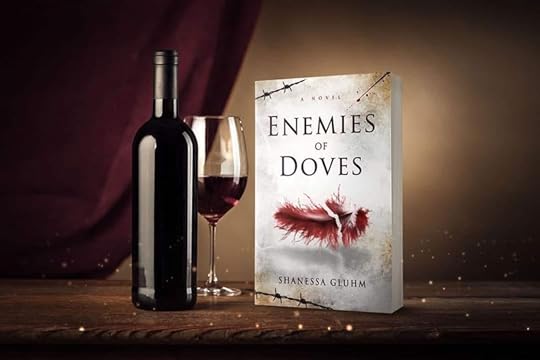 Available wherever audiobooks are sold!
Available wherever audiobooks are sold!
August 30, 2020
No Author is an Island
Writing is a solitary job. Eventually, you work with agents and editors to polish your book up, but the bulk of writing is done alone.
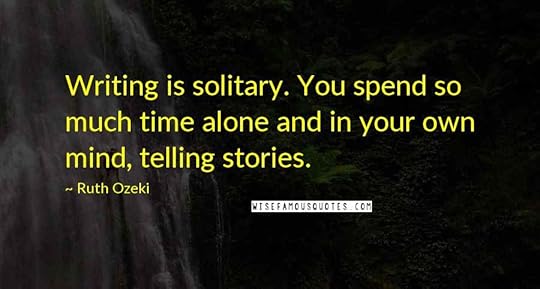
As it is with most professions, the average person has no idea what goes into creating a book, or why it takes so long to do it. I recently had someone ask, “If you are such a good writer, how come it took you 5 years to write a book?” That’s why it’s important to find other authors to connect with.
That’s why it’s important to find other authors to connect with.

My first connections made in the writing world were with other writers in the TouchPoint Press family. I sought many of them out with questions, and they were always gracious to help. One that stands out is Kathryn Brown Ramsperger. I wrote her with a question, and she set up a phone call with me so she could answer in great detail. My relationship with Kathy has continued and she’s been so supportive by reading my book and interviewing me for her Story Hour program on Facebook.
There are so many other authors with TouchPoint that have helped and are still helping me day to day. I can’t list them all, but Caroline Barney and Amanda Umfress were on my launch team and several other authors including Scott Rutherford, R.J. Passer, Tabatha Waybright, and Sean Paul Murphy have read (or are reading) my book on their own accord and have shared about it with their readers. I’m sure I’m leaving someone out, so please forgive me.
I’ve shared before that I had a really hard time finding other books I felt were similar to Enemies of Doves. That changed when I read The Life We Bury by Allen Eskens. After working up my courage, I decided to send Allen an email asking for marketing advice. After all, his book had been published by a small press and became a USA today bestseller with a movie in the works. I wasn’t even sure that he would respond, but he did and in great detail with insightful and helpful advice. I really wanted to ask him if he would read my book and do a blurb for it, but I chickened out.  Maybe next time.
Maybe next time.

After my book was released, I saw a book come out that Allen Eskens did do the blurb for, All We Buried by Elena Taylor. I thought if Allen Eskens blurbed her book, maybe it was similar to mine as well. I bought it (fabulous read) and sought her out for advice. She not only shared so much knowledge about marketing and social media, she also interviewed me for her blog. Elena also works as a developmental editor (Allegory Editing) and has offered free writing classes throughout the pandemic. I can’t begin to tell you the knowledge I’ve gleaned from these sessions each Wednesday.
Another author jackpot I hit was by contacting award-winning author of southern fiction, Claire Fullerton. We had an hour-long phone conversation where she gave me so much information, I filled up 10 pages in my notebook. She also told me three other authors to contact: Michelle Cox, Johnnie Bernhard, and Kathleen Rodgers. When Michelle Cox and I spoke she said, “Any friend of Claire’s is a friend of mine.” I guess I should have told her I’d technically never even met Claire, but I already felt like we were good friends just by that phone call. All four of these amazing ladies have been so great to give advice, share about my book, and encourage me in my personal and professional life.
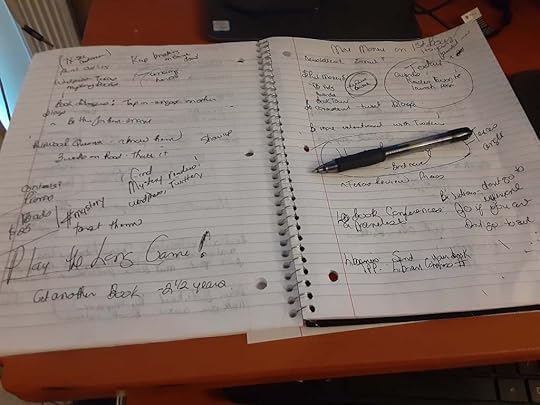
There are several author groups I’m a part of on Facebook. I have two personal favorites. One is a group for 2020 debut authors and the other is for TouchPoint Press authors. It was these groups I turned to when my first bad review came in. An author in one group basically said, “Oh honey, you haven’t seen a bad review yet” and shared a truly scathing review of his book. Within these groups we can celebrate accomplishments, learn from mistakes, and have a safe place to vent where we are completely understood.
Besides other authors, reading groups have been a huge support. I’ve followed Ashley Spivey since her Bachelor days and was so thrilled when she allowed me to take over her book club’s Instagram. It resulted in me making the Amazon Top 100 Best Seller List for the first time. Other book clubs that have supported me are Sue’s Reading Neighborhood, Novels and Latte, A Novel Bee, Linda’s Book Obsession, Wild Sage Book Blog, and Kathy Murphy, the Pulpwood Queen herself.
This isn’t even mentioning my blog tour organizers and participants nor the authors who have reached out to me because they read and enjoyed my book.
Sorry if this blog reads like a long Oscar acceptance speech, I just wanted to publicly thank these authors and book lovers who have supported me through my launch. I’ve gotten really good at saying, “I have no idea what I’m doing, and you appear to, please help me!” Without exception, every single author I sought out wrote me back. As writer Kirsten Oliphant puts it, we may write alone, but we don’t work alone.
There is always more to learn, but I feel one hundred percent more prepared to launch my second book thanks to all I’ve learned from these true industry professionals, who I am now lucky enough to call friends.
Now if they could just help me finish writing it…

August 24, 2020
‘Twas the Night Before Audio Release
The audiobook for Enemies of Doves is releasing tomorrow! To say I’m excited to hear it would be a huge understatement. I feel like a kid on Christmas Eve.
I love audiobooks. I listen to them on long drives and when I’m cooking. (It’s honestly the only thing that makes cooking bearable.) Studies have shown that listening to audiobooks improves reading fluency as well as focus and attention span. Personally, I love how great narrators can make me lose myself in a book. Through articulation, voice inflection, varied cadence, and delivery with the perfect hint of humor or mystery, they bring a story to life.
When I signed with my publisher, the contract included audio rights, but I also knew that didn’t guarantee my book would be picked up for an audio version. My publisher utilizes an amazing agent, Stephanie Hansen with Metamorphosis Literary Agency, to pitch to audio producers, film producers, and foreign publishers. She let me know that my book had been pitched to Dreamscape, but said to let her know when my book received 50 Amazon reviews or won awards as that would help its chances. I wasn’t close to either of those at the time, so I didn’t hold out much hope. Not to mention, I looked through their catalog and saw they had deals with Marvel and Hallmark Publishing. I felt a little out of my league. However, the next day we got an offer!

Although this deal started in early April, we couldn’t announce it until the contract was final last month. The wait was hard, but then everything moved very quickly. I couldn’t believe the release date was so soon!
I’ve been asked a lot if I got to select the narrator. I didn’t, but am so pleased with Dreamscape’s choice of Michael Brusasco.
 Image from http://www.michaelbrusasco.com/
Image from http://www.michaelbrusasco.com/Mr. Brusasco is an actor, director, and voice teacher based in California. I was able to listen to many audiobook samples from his website and was very impressed with his talent. I have only heard him read 5 minutes of Enemies of Doves, but wow! He did a phenomenal job.
I’ve never given it much thought before, but I assume audio narrators have to read the entire book before they begin, just like actors have to read a script. Or at the very least, someone with the production company has to. Because what if they are doing a character’s voice as deep then ten chapters in the author writes, “he said in his unusually high and whiny voice?”

Something else interesting to note, on Kindle it says my book is generally read in 6 and a half hours. Yet the audio version is 13 hours. I looked at other books and found this was a very common result. The average audiobook is read at 150-160 words per minute whereas an average reader reads 300 words per minute. Makes sense considering that audiobooks are a production and read dramatically. Not to mention, most readers tend to skim when reading silently. I know a lot of people who speed up the audio narration when they listen to books, but I rarely do.
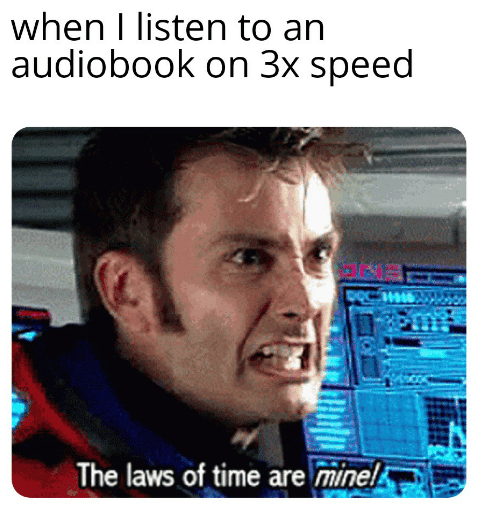
I don’t know about you, but I’m ready for all 13 hours of Enemies of Doves! If you want to order here are a few places you can:
Audible
Barnes and Noble
Bookshop.org (This is a great way to support indie bookstores!)
Google Play
Kobo
A few notes on Audible…. If you’ve already bought the book on Kindle, you can buy the audiobook for less than 8 dollars. This is a great deal! You can also choose to use a credit or sign up for a month long free Audible trial and listen to Enemies of Doves for free. Audible will even send you a reminder before they charge you so you can cancel if audiobooks aren’t for you.
I’m excited for new readers to discover Enemies of Doves and for readers who have already enjoyed it once to hear it in a new way. Happy listening!




